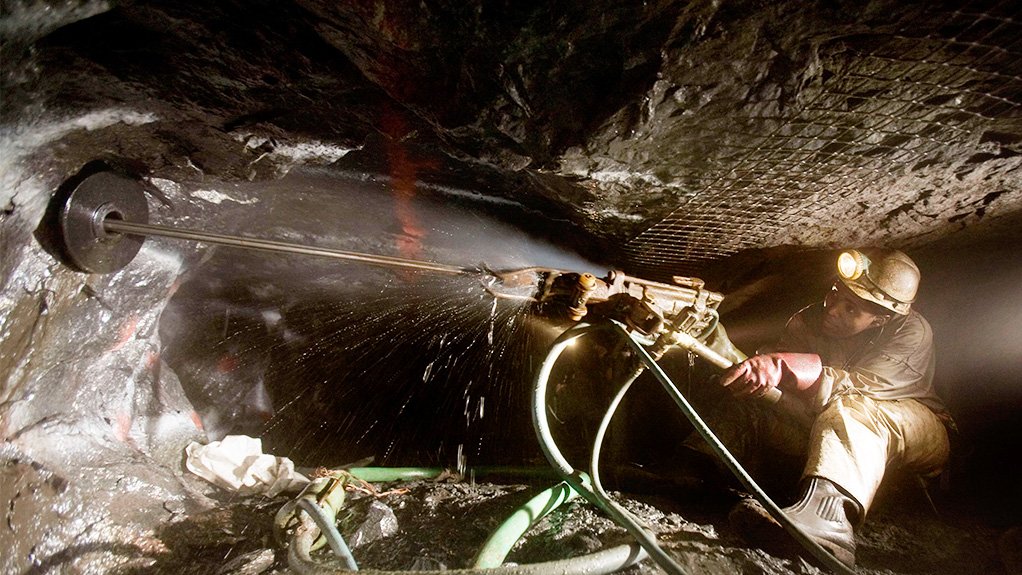- Minerals Council South Africa's report on the impact of electricity tariff increases on the industry0.42 MB
The Minerals Council South Africa is ringing alarm bells over the threat posed to employment and production in the gold and platinum sectors as a result of recently approved electricity tariff increases, including the 13.8% hike to be implemented from April 1.
In addition, the council is warning that the hikes will accelerate the State-owned utility’s own downward spiral as mines and smelters, which currently consume 30% of Eskom’s yearly production, respond by closing unprofitable operations.
The body’s revised estimates point to 90 000 gold and platinum jobs being at risk as a result of the increases, approved by the National Energy Regulator of South Africa (Nersa) on March 7. The figure represents a modest improvement on the 150 000 job losses forecast ahead of the regulator’s fourth multiyear price determination (MYPD4) decision.
Some 464 000 people were employed across the mining industry in 2017 and the council estimated earlier this year that about 18 300 of the 53 500 jobs shed in the industry since 2006, when South Africa’s power crisis emerged, could be directly attributed to electricity tariff increases.
Nevertheless, the outlook for the gold-mining sector remained especially dire, with the council indicating that only two mines were likely to remain viable at the end of the three-year period. Previously, only one mine, with a yearly output of 20 t, was expected to remain viable. In 2018, the industry is likely to have produced about 132 t of gold.
Nersa has granted Eskom increases of 9.4% for 2019/20, 8.1% for 2020/2021 and 5.2% for 2021/22, following an adjudication of the MYPD4, in which Eskom requested hikes of 17.1%, 15.4% and 15.5% respectively. The State-owned utility would increase tariffs on April 1 by 13.8%, however, given that the regulator had already approved a further 4.41% hike, in line with an earlier adjudication of three regulatory clearing account applications.
Minerals Council South Africa CEO Roger Baxter said on Monday that the “front-loaded” nature of the hikes would hurt all miners as well as smelting operations.
Deep-level gold and platinum miners would be particularly hard hit, however, given that many mines were already unprofitable or marginal, as well as the fact that electricity made up about 25% and 17% respectively of a gold and platinum mine’s cash production costs.
Chief economist Henk Langenhoven said total industry production costs would rise by 29% over the three-year period, which was 12% lower than would have been the case should Nersa not have disallowed R102-billion of revenue sought by Eskom in the MYPD4.
Nevertheless, the outcome was “inconsequential” for the gold sector, potentially only saving about 8 000 jobs. For platinum, the impact was larger, potentially saving 22 800 jobs.
The hikes would further erode the competitiveness of the South African mining industry relative to global peers, which were enjoying lower tariffs and were also less affected by supply interruptions.
At R1.06/kWh from April 1, Eskom’s Megaflex industrial tariff was higher than average industrial tariffs of about R1/kWh in the US and well above those of around 66c/kWh available in Quebec, Canada.
“Our electricity prices in South Africa have gone up by 538% over the last ten years, which has obviously had a huge impact particularly on our deep-level gold and platinum mines,” Baxter noted.
South Africa had also experienced a sustained period of rotational power cuts in mid-March, with Stage 4 load-shedding, equating to cuts of 4 000 MW, declared by Eskom on several days. During those periods, mines were required to reduce their load by 20%.
ESKOM’S MINE-LINKED REVENUE TO FALL
Although Eskom immediately noted that R102-billion in revenue had been disallowed by Nersa for the MYPD4 period, Langenhoven cautioned that the approved hikes were likely to supress demand further and accentuate Eskom’s so-called death spiral.
He said that, while Eskom expected mining-related revenue to rise to R50-billion by the end of the MYDP4 period, the modelling done by the Minerals Council of South Africa showed that its revenue could fall to about R30-billion as a result of operational closures.
“If the mining industry’s usage declines as tariffs make certain operations and activities unprofitable, Eskom will not achieve its targeted sales volumes,” Langenhoven explained.
“Inevitably, the increases awarded to Eskom will only serve to accelerate the power utility’s downward spiral that will come as a result of inflated tariff increases and the declining electricity usage by a critical consumer.”
Baxter indicated that the industry had noted the offer of special pricing agreements for companies experiencing distress as a result of the hikes, but was unaware whether any platinum or gold miners had applied to Eskom and Nersa for relief.
He also expressed frustration at the regulatory logjam preventing up to 2 000 MW of small-scale embedded generation projects from being implemented and indicated that the issue was receiving the priority attention of organised business.
Various mining companies have announced that they are studying various self-generation options, but remain concerned about the lack of regulations to facilitate projects of larger than 1 MW and for wheeling power from such projects.
EMAIL THIS ARTICLE SAVE THIS ARTICLE ARTICLE ENQUIRY
To subscribe email subscriptions@creamermedia.co.za or click here
To advertise email advertising@creamermedia.co.za or click here











